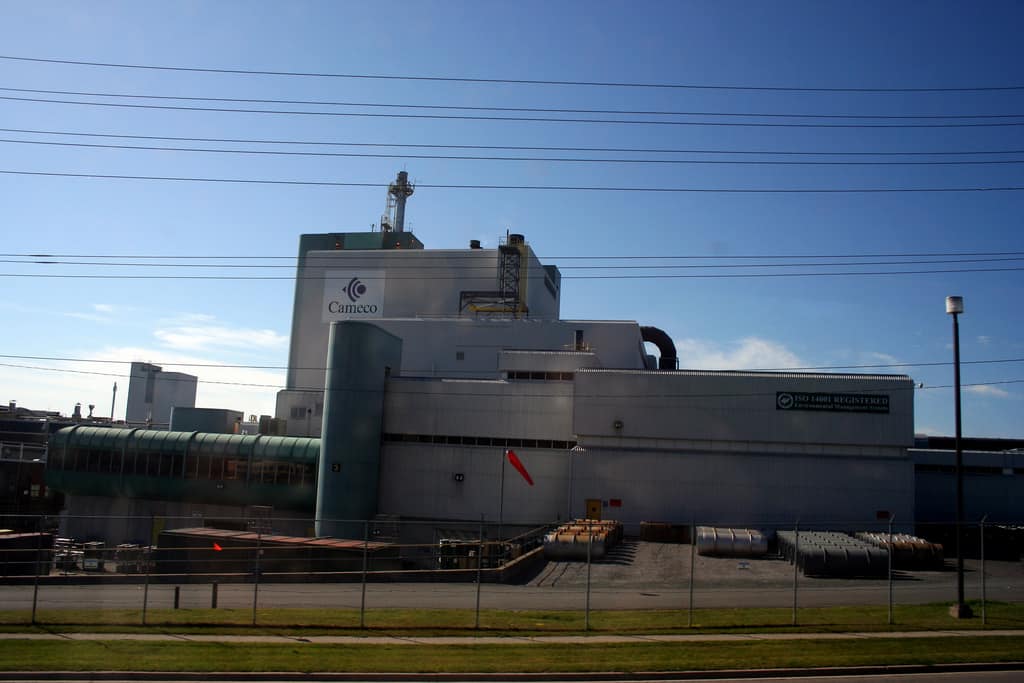Cameco Corporation (TSX:CCO)(NYSE:CCJ) has been hoping for a uranium market turnaround for nearly a decade. During that time, Cameco has watched uranium prices, and by extension, its stock price decline significantly primarily due to an imbalance between supply and demand.
Addressing the supply and demand imbalance while cutting costs
Following the Fukushima disaster in 2011, demand for uranium dried up, leaving Cameco and other miners left mining something that dropping in value. As demand continued to drop, supply continued to rise, creating the current supply-glut environment.
One of the things that Cameco can do to correct the oversupply of uranium on the market is to shutter several of its facilities. Earlier this month, the latest of those closures came into effect at both the McArthur River and Key Lake mines.
In total, Cameco laid off over 800 workers at those facilities in what the company hopes will amount to just a 10-month market turnaround. Cameco is offering those affected workers a supplemental unemployment boost that, when combined with unemployment insurance, should boost their income to 75% of their regular wage.
The company hopes these actions will keep these skilled workers local and that they will eventually return to the mine when conditions improve.
Cameco’s 10-month shuttering is part of a plan to address the current supply glut in the uranium market while also being able to cut costs. Cameco isn’t alone in this line of thinking either. KazAtomProm, the world’s largest uranium producer, announced similar supply cuts late last year.
The production cuts at Cameco and KazAtomProm will bring 2018 uranium production down nearly 20%, which should theoretically address the current supply glut.
Uranium could start to see increased demand too
Demand for uranium is staying at multi-year lows. Following the Fukushima disaster back in 2011, governments worldwide began to reconsider the safety and feasibility of supporting a nuclear-powered grid.
That lack of demand brought uranium prices down from over US$60 per pound to just over US$20 per pound, where it has remained for some time.
Cameco has until recently managed to avoid the full impact of this pricing change, as existing contracts are longer-term agreements with more favourable pricing terms that are typically over US$30 per pound.
Unlike the supply side glut that Cameco is addressing through production cuts and furloughed workers, the demand issue is being addressed on a more organic level.
Nuclear power is increasingly being viewed as a primary option for growing economies that are hungry for power. Russia, India, and China all have ambitious infrastructure development plans underway that are dependent on massive investments in their respective power grids.
Including those nations, there are nearly 60 reactors under construction globally, with another 160 in approval phases and a further 300 in the planning phase.
Nearly half of the reactors under construction are set to come online within the next two years, which could become a new revenue stream for Cameco.
If Cameco’s supply side clean-up proceeds as planned, those new contracts should come about just as uranium prices begin an upwards trajectory.
What about results?
Cameco announced quarterly results this month that, while an improvement over the same quarter last year, still showed market weakness.
Cameco posted a loss of $62 million or 16 cents per share, compared with a loss of $144 million, or 36 cents per share loss in the same quarter last year.
Adjusted earnings for the quarter topped $181 million, or $0.46 per share, which represents an increase over the $90 million, or $.23 per share reported in the same quarter last year.
If Cameco’s supply cutting gamble pays off, as many expect that it will, then we should see a steady improvement over the course of the year and well into the next year as demand steadily increases, thereby confirming the company as one of several turnaround candidates on the market.







